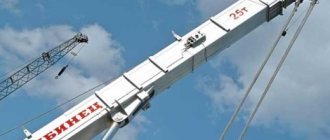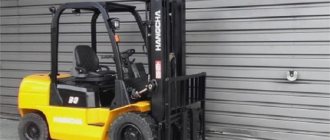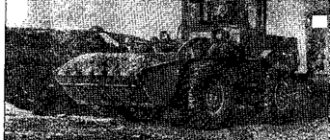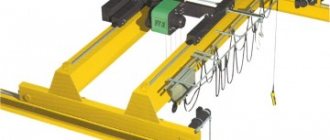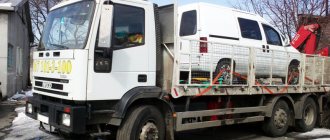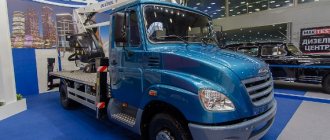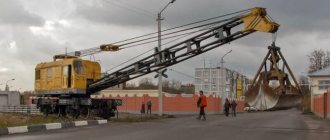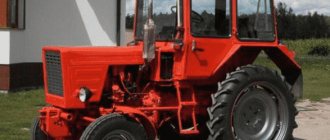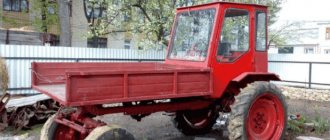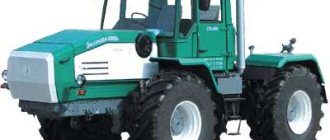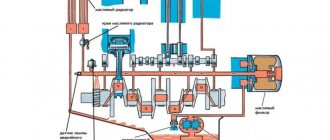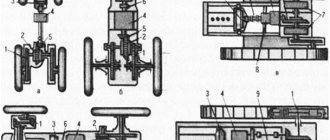The global market for special equipment never ceases to amaze with a huge selection of machines from both famous and little-known brands. Each manufacturer strives to capture the imagination of potential buyers with wide functionality, innovative technologies, and the unique design of their products.
An ordinary user, an entrepreneur, simply wants to equip his work site with modern, affordable and productive equipment. It is these characteristics that correspond to a diesel forklift - the most popular type of special equipment, which is used in various spheres of the real economy.
Features, advantages and disadvantages
Any machine equipped with an internal combustion engine requires fuel to operate. As such, gasoline, liquefied gas, diesel fuel or other flammable substances that are not yet widely used are used. A diesel engine runs on diesel fuel and diesel fuel, and this determines its features.
The design of such a motor is somewhat simpler than any other engine. Ignition of the fuel does not occur due to a spark from the spark plug, but due to strong compression and heating of the air in the cylinder, into which a jet of fuel is directly supplied. The compression ratio in the cylinders is twice that of gasoline engines. Because of this, the dimensions and weight of the diesel unit are much higher, which can be attributed to its disadvantages. However, it is considered the most reliable and unpretentious, works stably even at low speeds, does not require frequent maintenance and has an increased service life. In addition, diesel engines are more economical and emit fewer harmful substances into the atmosphere.
Among the disadvantages, we can note an increased level of noise and vibration, as well as some difficulties during cold starts, however, modern units in these indicators are close to gasoline ones. Diesel forklifts are used in the most difficult conditions and withstand any weather anomalies, which is why they are so in demand on the market.
Design of a four-wheel electric forklift
The main element of the electric forklift is the frame, which rests on the front and rear axles, where the front axle is driven, the rear axle is steered (attached to the frame using springs). The hydraulic cylinder on the drive axle provides articulated connection to the frame of the forklift, which consists of an outer and inner (movable) frame. The movable frame moves vertically relative to the main one.
Read
Registration of the forklift. Registration with Gostekhnadzor
The main frame can have an initial tilt forward of 3-5° and backward (up to 10°). The ability to tilt the forklift forward makes it easier to grab the load with forks, and tilted backwards increases the stability of the forklift itself when moving with the load. The controls of a forklift can be: a steering column with a hand brake, levers, key switches, a joystick. A counterweight installed at the rear of the loader (on the opposite side of the forks) ensures stability of the loader when working with large, heavy loads. A four-wheel electric forklift is inferior to a three-wheel one in maneuverability, but its improvement is facilitated by the separate drive of the drive wheels.
The most popular electric forklifts are machines with a lifting capacity from 0.25 to 5 tons (less often up to 10 tons or more).
The mechanism for transmitting motion from the electric motor to the front wheels of the loader is the drive axle..
The electric motor (5) is bolted to the cast steel flange of the drive axle housing. At the end of the electric motor shaft, a bevel gear (2) is attached to a key, which meshes with a large gear (20), fastened to the differential housing (21) with rivets. The differential housing is mounted on two roller bearings (10). In the differential housing there are two bevel gears (12) with shanks and two small gears - satellites (13), sitting on a common pin (15). The pin is passed through the holes in the differential housing and secured with a pin (14). In the shank of the gear (12) there is a splined hole into which the axle shaft (9) is inserted; at the other end of the axle shaft, a gear (11) is mounted on splines, which meshes with a gear (17) having internal teeth. A bandage (18) with a rubber tire is mounted on a massive cast-iron wheel, and a gear (17) is fastened with rivets.
Photo source: yale.com
Read
Will electric forklifts replace diesel? Market participants' opinions
When the electric motor is turned on, torque is transmitted through gears (2) and (20), (12) and (17) to the drive wheels. The total gear ratio is 17, the gear ratio in gears (2) and (20) is 4.56, and in gears (11) and (17) it is 3.73. The drive wheel is mounted on two tapered roller bearings (4), mounted on a fixed axle (8), pressed into the crankcase housing. The drive wheel bearings are covered with a cast iron cover (3). Brake discs (1) with pads are attached to the side flanges of the drive axle. The drive shaft (9) is supported by a double-row spherical bearing (7) mounted in a stationary seal disk (6). On the outer surface of the seal disk, a felt ring is placed in a trapezoidal groove, which protects the internal cavity of the drive wheel from dust and lubricant leakage. On the upper part of the drive axle housing (16) there is a breather (19) with a swinging cover.
Types of diesel forklifts
- A front-end loader has a front arrangement of working parts - a boom and a bucket, through which it is capable of collecting any bulk material from a horizontal surface, lifting, moving and unloading to the desired location. This equipment is used in quarries, cargo terminals and ports, road and landscape construction, mining and processing enterprises, utilities, agriculture, etc.
- A diesel forklift is indispensable in any production, retail, logistics and other warehouses. This machine has compact dimensions, has increased maneuverability, and the main working element is a special L-shaped fork, the so-called “forks”. With their help, the machine picks up pallets or pallets with cargo, transports them to the desired location and stores them in stacks.
- The diesel mini loader is a real unique product. This small, nimble and quite powerful machine is distinguished by its reduced size, excellent maneuverability and controllability. A mini-loader can be a smaller copy of a front-end or forklift, and in a few minutes turn into a bulldozer, trencher, street sweeping machine and other special equipment. The range of possible specializations depends on the type of chassis, frame design and the availability of interchangeable attachments. Accordingly, the scope of application of mini loaders is the widest: from quarries to small enterprises and utilities.
Additional accessories
They can be divided into hydraulic and mechanical. Hydraulic equipment is connected to the loader system by installing a hydraulic function: two hoses are connected to the carriage, a distributor with a control handle is mounted on the console. The hydraulic function can be purchased outright, but given its high cost, installation can be delayed. Some devices (roll gripping) require two of these devices. Mechanical devices do not require hydraulics.
Among the attachments, the most common are:
Bale grip
Significantly increases productivity when moving bales, such as waste paper, not stacked on pallets, by gripping them on both sides with special clamps. There is a version with a rotation function.
Roll gripper
Most often used for working with paper rolls, the roll can not only be grabbed for transportation, but also rotated 3600. Several options are offered: with one or two movable forks, with the ability to work with two or more rolls stacked on top of each other. Their prices, of course, are different.
Barrel grip
Side grip for transporting, unloading/loading metal drums. Allows you to rotate the barrel.
Fork positioner
The operator, right from the cab, with one movement of the control handle, can change the distance between the forks teeth, adapting it to a specific load (pallet). There are options for large-sized cargo with the possibility of spreading at a distance of up to 2.5 m.
Sideshifting system (sideways shift of the carriage)
Allows the fork carriage to move horizontally to the right or left and accurately position the load at the desired location, without the need for maneuvering. Significantly increases the efficiency of operations at height, with raised forks, for example, when unloading/loading into wagons, containers, trucks. The sideshift carriage is one of the most useful and popular accessories.
Fork rotation device 3600
Makes it possible to rotate the carriage clockwise or counterclockwise, that is, certain types of cargo can be turned over or turned on their side, tilted.
Pusher
It is a special plate that moves the load forward - this is useful when loading in bulk or from one side of a vehicle. The return pusher model is used in cases where it is necessary to handle loads on a sheet pallet. It cannot be dealt with by ordinary means, and a pusher with return is simply irreplaceable for such operations
Sliding forks (telescopic)
Extend the working distance for installing and removing pallets. Using such a device, you can install a pallet deep into a rack, body or truck. Also allows you to process two pallets at the same time.
Bucket (tipper)
An indispensable addition for working with bulk materials. The mounted bucket can be tilted up to 500 down and 400 up.
Cathead
Crane boom with lifting function on slings, mounted on forks.
Multi-pallet grabber
Significantly increase productivity by processing multiple pallets simultaneously.
Pin
An effective solution for moving, unloading and loading pipes, various materials in rolls, and any ring-shaped objects. A specialized option is provided for working with linoleum rolls. The length of the pin varies depending on the modification and can reach several meters.
Stabilizer
Other names: clamp, clamp. It is a special plate that is mounted at an appropriate distance above the forks. Fixes the position of the load, eliminating the risk of falling. A useful addition when transporting, lifting/lowering breakable loads, such as boxes of bottles.
The range of equipment offered for processing cargo flows of high or low intensity, as well as devices that expand the functionality, is extensive; there is plenty to choose from that is exactly the equipment that meets your needs and the direction of the organization’s activities. We also recommend paying attention to maintenance costs and availability. When choosing a seller, make sure that qualified service will be provided if necessary.
Special equipment from China: the path to success
Chinese diesel forklifts have long aroused distrust among global consumers - they burst into the special equipment market too suddenly, captivating them with their interesting design, stated characteristics and low cost. However, the first “messengers” from the Middle Kingdom were not distinguished by either productivity or reliability, and therefore the demand for them began to quickly fade away.
The lack of a sales market caused the collapse of many engineering enterprises in China. Only those manufacturers who took into account all the mistakes made earlier and began to work not on quantity, but on quality, managed to stay afloat and even move forward. As a result, today Chinese special equipment is not much inferior to “classmates” of famous world brands.
Modern diesel forklifts from China have obvious advantages: they are productive, economical, reliable, easy to maintain and repair, and meet the strict requirements of international quality and environmental safety standards. During operation, consumers were able to evaluate the level of comfort, ease and convenience of operation, and the wide functionality of the machines. And what is important, Chinese special equipment still remains the most affordable in price, and you can purchase it at a dealership in any federal district of our country.
What is an electric stacker
A stacker is a vehicle that is equipped with a special mechanism for lifting, moving and stacking cargo. Such equipment greatly simplifies the task of stacking cargo in stacks or racks in several tiers.
An electric stacker is the same vehicle for lifting, transporting and stacking goods, but powered by electricity. That is, an electric drive is used as the driving force. And although such equipment originated from forklifts, they are still different equipment designed for different tasks.
Do I need to pay transport tax on an electric stacker?
Another significant question is whether transport tax is paid on an electric stacker. And here it is important to carefully study the technical parameters of the machine. According to the Decree of the Government of the Russian Federation of August 12, 1994 N 938 (as amended on November 12, 2012) “On state registration of vehicles and other types of self-propelled equipment on the territory of the Russian Federation,” only those vehicles whose engine power exceeds 4 kW are subject to registration.
Therefore, if your stacker has a motor of less than 4 kW (as a rule, most stackers are equipped with motors around 1-3 kW), then you do not need to register it. Accordingly, you do not need to pay transport tax. If the engine power exceeds 4 kW, then such a stacker is subject to taxation.
Do I need rights to operate a stacker?
Despite the fact that electric stackers are used in closed areas, labor safety regulations require the operator to have a license to drive special equipment. Of course, we are talking about self-propelled options.
Training and obtaining a license to operate an electric stacker is a mandatory condition, without which you will not be allowed to work with such special equipment. The operator will need a category B tractor driver's license issued by Gostekhnadzor. In some cases, category C may be required (driving cargo vehicles with a permissible weight of over 3.5 tons) with a driving experience of at least 2 years.
Today, there are various organizations and schools that provide training services and have the right to issue driver's licenses.
